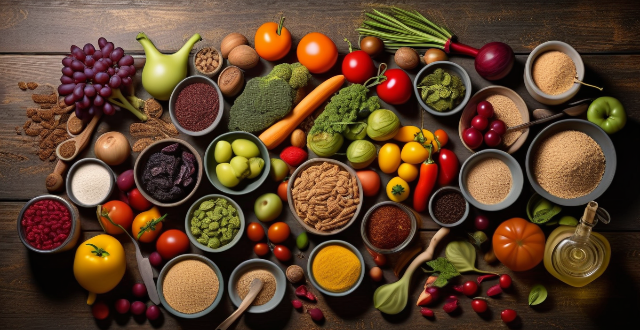Acid is crucial in cooking for balancing flavors, enhancing aromas, and improving overall taste. Types of acids include citric acid, vinegar, wine, tomatoes, buttermilk, yogurt, and tamarind paste. Acid should be added early in the cooking process or as a finishing touch. It can balance sweetness, enhance umami, cut through richness, and boost aromas. However, use acid judiciously and experiment with different types to achieve the perfect balance for your palate.

Using Acid in Cooking to Balance Flavors
Acid plays a crucial role in cooking by balancing flavors, enhancing aromas, and improving the overall taste of dishes. Here's how you can use acid in your cooking:
1. Types of Acids
There are various types of acids that can be used in cooking, including:
- Citric Acid: Found naturally in citrus fruits like lemons, limes, and oranges.
- Vinegar: Comes in many forms such as white vinegar, apple cider vinegar, and balsamic vinegar.
- Wine: Both red and white wines can add acidity to dishes.
- Tomatoes: Naturally acidic and often used in sauces and soups.
- Buttermilk and Yogurt: These dairy products contain lactic acid, which can add tanginess to recipes.
- Tamarind Paste: A sour paste commonly used in Asian and Latin American cuisines.
2. When to Add Acid
Acid should generally be added early in the cooking process to allow its flavors to meld with other ingredients. However, for salad dressings or finishing touches, acid can be added at the end.
3. Balancing Sweetness
Acid is particularly effective at counteracting sweetness. For example:
- Desserts: A squeeze of lemon juice in sweet pie fillings or cake batters can brighten the flavor.
- Sweet Vegetables: Roasted root vegetables like carrots or sweet potatoes benefit from a splash of vinegar or a squeeze of citrus juice.
4. Enhancing Umami
The combination of acid and umami-rich ingredients creates depth of flavor. Try:
- Tomato Sauce: Adding a bit of vinegar or wine to tomato sauce enhances its savory notes.
- Meat Marinades: Acid helps tenderize meat while adding complexity to the flavor profile.
5. Cutting Through Richness
In fatty or rich dishes, acid provides a refreshing contrast:
- Foie Gras: Often served with a sweet onion compote and a drizzle of balsamic vinegar.
- Creamy Soups: A teaspoon of white vinegar can perk up cream-based soups like vichyssoise or potato leek soup.
6. Boosting Aromas
Acid also helps release aromatic compounds during cooking, making your kitchen smell wonderful:
- Stir-Fries: A dash of rice vinegar adds fragrance to Asian stir-fries.
- Herb Salads: Citrus juice not only seasons greens but also helps release their essential oils when tossed with herbs like basil or mint.
7. Using Acid Judiciously
Remember, a little acid goes a long way. Start with small amounts and adjust according to taste, as too much acid can overpower other flavors.
8. Experimentation
Don't be afraid to experiment with different acids in your cooking. Each type brings its unique characteristics and can transform a dish in surprising ways. Keep tasting as you cook and make adjustments until you find the perfect balance for your palate.
In conclusion, incorporating acid into your cooking is an essential technique for achieving balanced and layered flavors. By understanding the various acids available and how they interact with different ingredients, you can elevate your dishes to new heights of deliciousness.